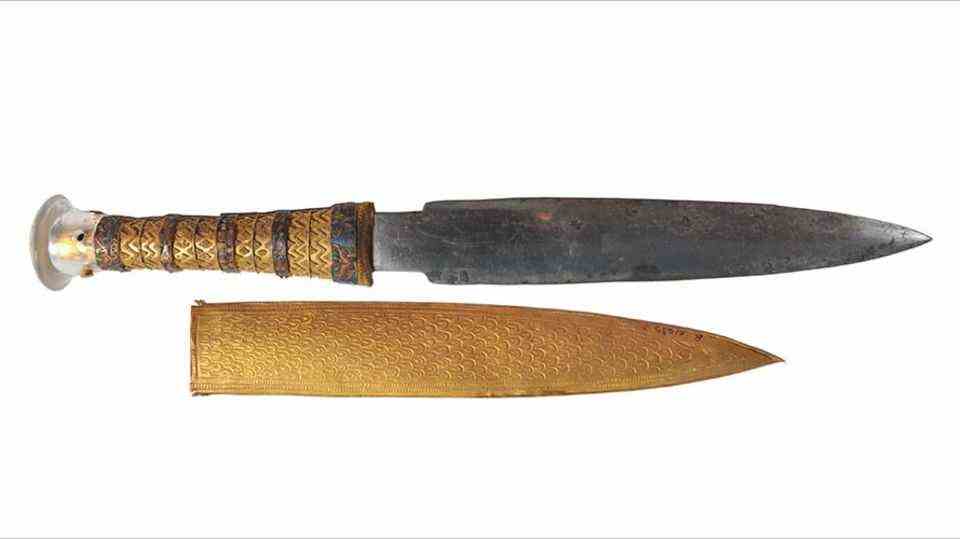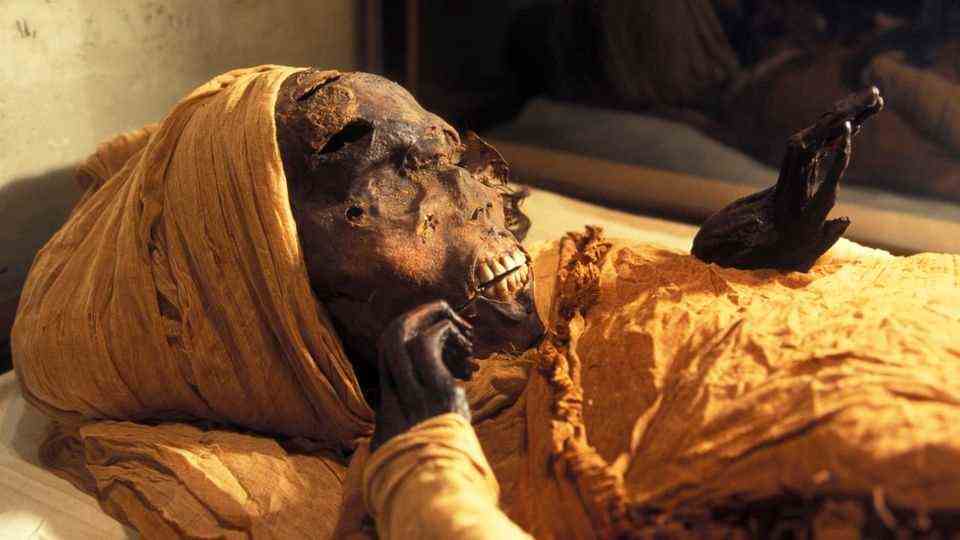3D scan
Intact brain and beautiful teeth – the “perfect” mummy of Amenhotep I was x-rayed for the first time
The mask and what’s behind it.
© Commons
Pharaoh Amenhotep I was lucky that his perfectly preserved mummy was never touched in modern times. A 3-D scan has now discovered its secrets.
The warrior king Amenhotep I survived the ages unscathed. The pharaoh is one of the few mummies that has not been unwrapped in modern times. And that’s how it should stay. To get its secrets out of it, only non-invasive methods that do not damage the mummy are used. The Pharaoh has now been x-rayed and digitally unpacked for the first time. “With his narrow chin, small nose and curly hair, he is physically similar to his father,” says radiologist Sahar Saleem. “Surprisingly to someone who lived about 3,500 years ago, they also have strikingly good teeth.” Usually the enamel is removed from stone debris in the ground grain.
3D computed tomography
Saleem deciphered the layers of the mummy with a 3D computed tomography (CT) scan. The results can be used to draw conclusions about his appearance and the jewelry with which he was buried. “We can see that Amenhotep I was around 35 years old when he died,” said Saleem. “He was about 169 cm tall, circumcised and had good teeth. In his robes he wore 30 amulets and a unique golden belt with gold pearls.” She said the fact that his teeth were so well preserved shows how “amazing” the mummification process was. “Many royal mummies had bad teeth, but Amenhotep I had good teeth.” His brain was also intact, unlike Tutankhamun and Ramses II. The project was as exciting as “like opening a gift”.
Heyday of the empire
Amenhotep I was the second king of the 18th dynasty and ascended the throne after the death of his father Ahmose I. He ruled Egypt for about 21 years, from about 1525 to 1504 BC. His name means “Amun is content”. His throne name was Djeserkare – “Holy is the soul of Re.”
In the 11th century BC BC – during the 21st Dynasty – it was unpacked and rewrapped by priests to repair damage caused by grave robbers. For a long time it was speculated that the priests unpacked mummies in order to steal the gifts of the deceased for new mummies. The rich jewelry of Amenhoteps I refutes this assumption. The team was hoping to find evidence of how Amenhotep died. “We couldn’t find any wounds or disease-related disfigurements that could be the cause of death. Except for the numerous mutilations after death, which were probably carried out by grave robbers after his first burial,” said Saleem. “His entrails had been removed by the first mummifiers, but not his brain or heart.”
First grave was never found
The old grave of Amenhotep I was never found in modern times. At the time of the 20th dynasty the tomb of Amenhotep was still being inspected and was found undamaged at the time, in the 21st dynasty it was looted. “We now know that the priests of the 21st Dynasty, at least with Amenhotep I, lovingly repaired the injuries inflicted by the grave robbers, and restored his mummy to its former glory with its splendid jewelry.”
The mummy was discovered in 1881 at a site in Luxor known to have been used by priests of the 21st Dynasty to hide the mummies of kings and nobles to protect them from grave robbers. Now it rests in the Egyptian Museum in Cairo. Because of its intact linen cover, which is covered with garlands of delphinium, Egyptian river hemp and safflower, and because of the beauty of its painted funerary mask, it was never unpacked.





